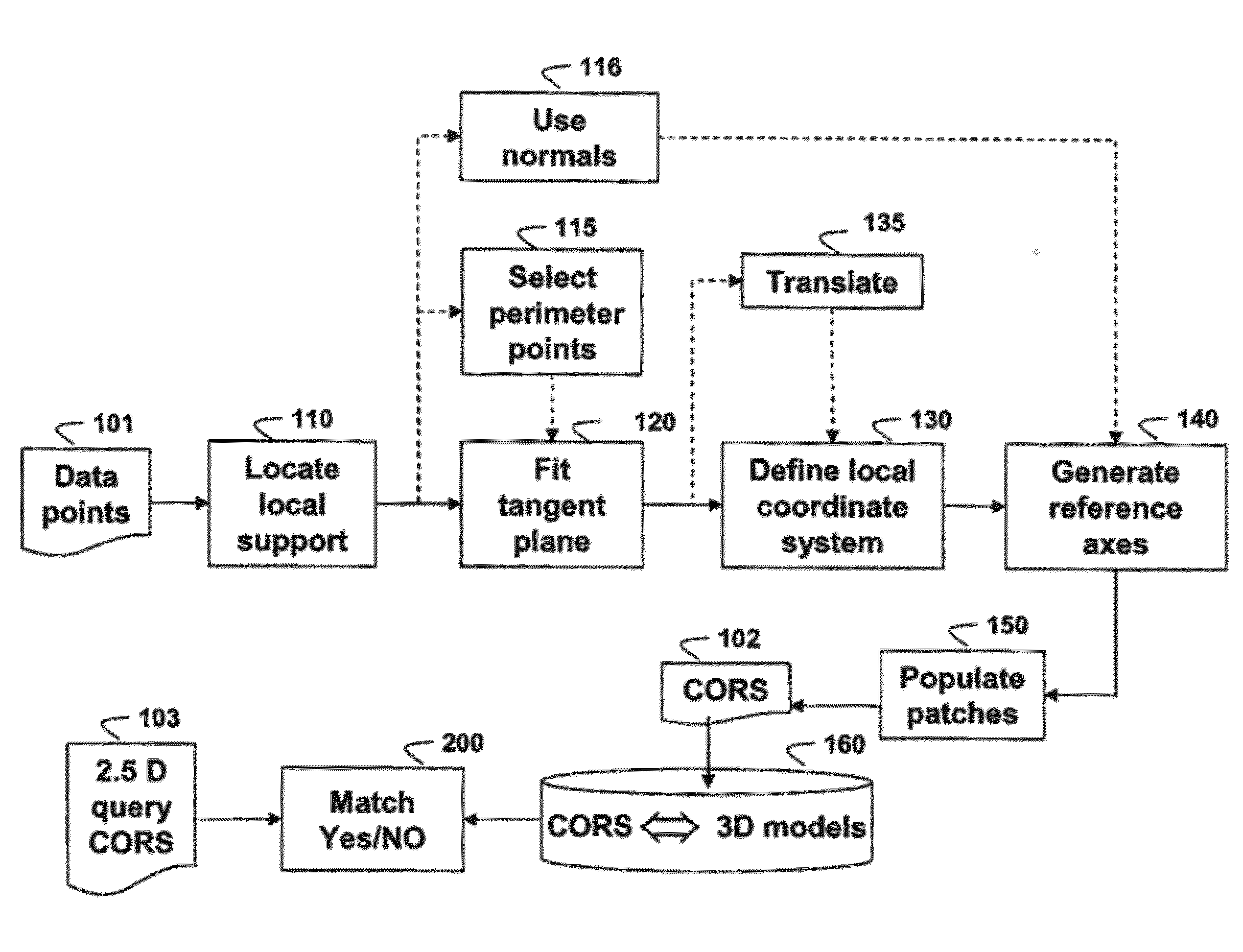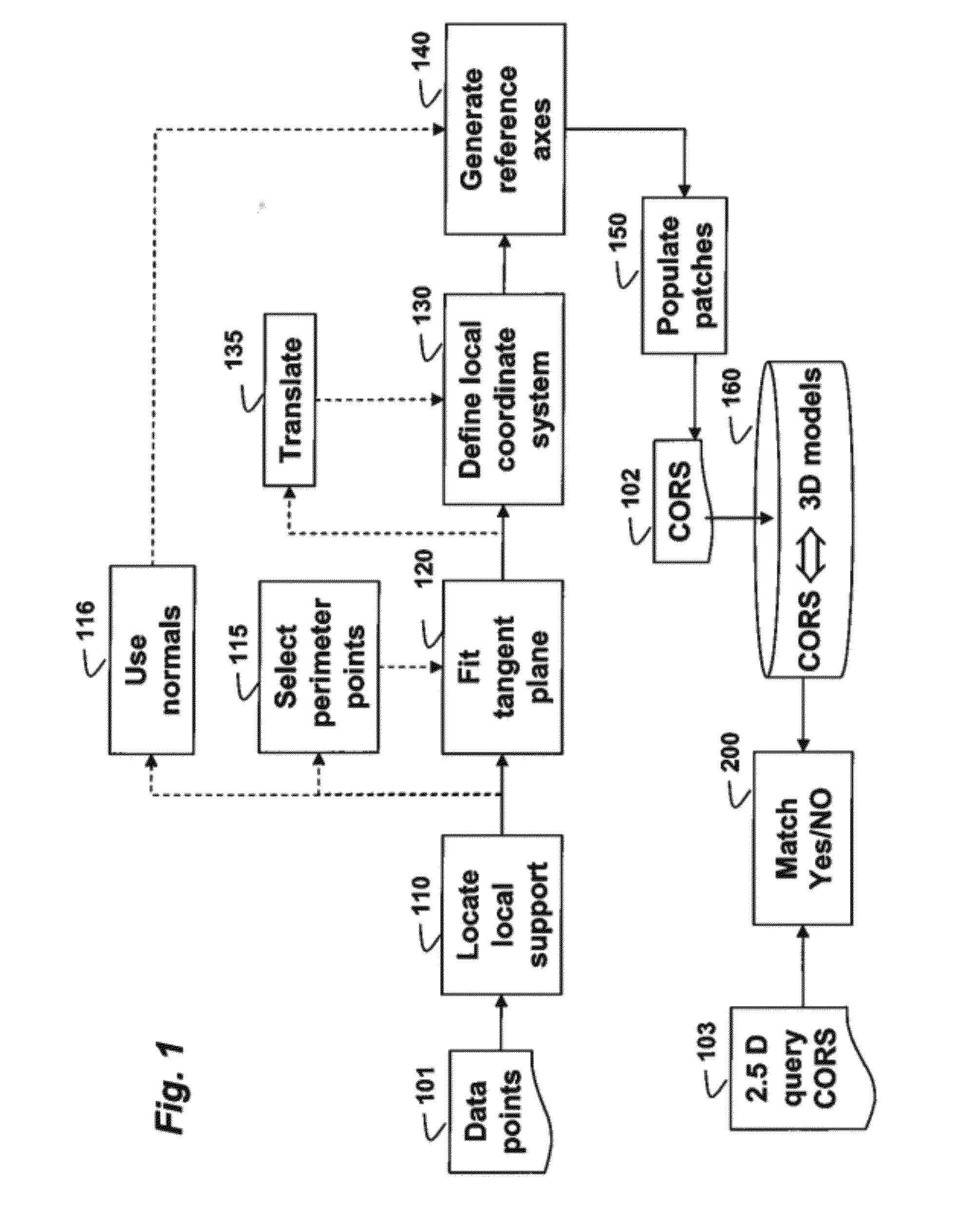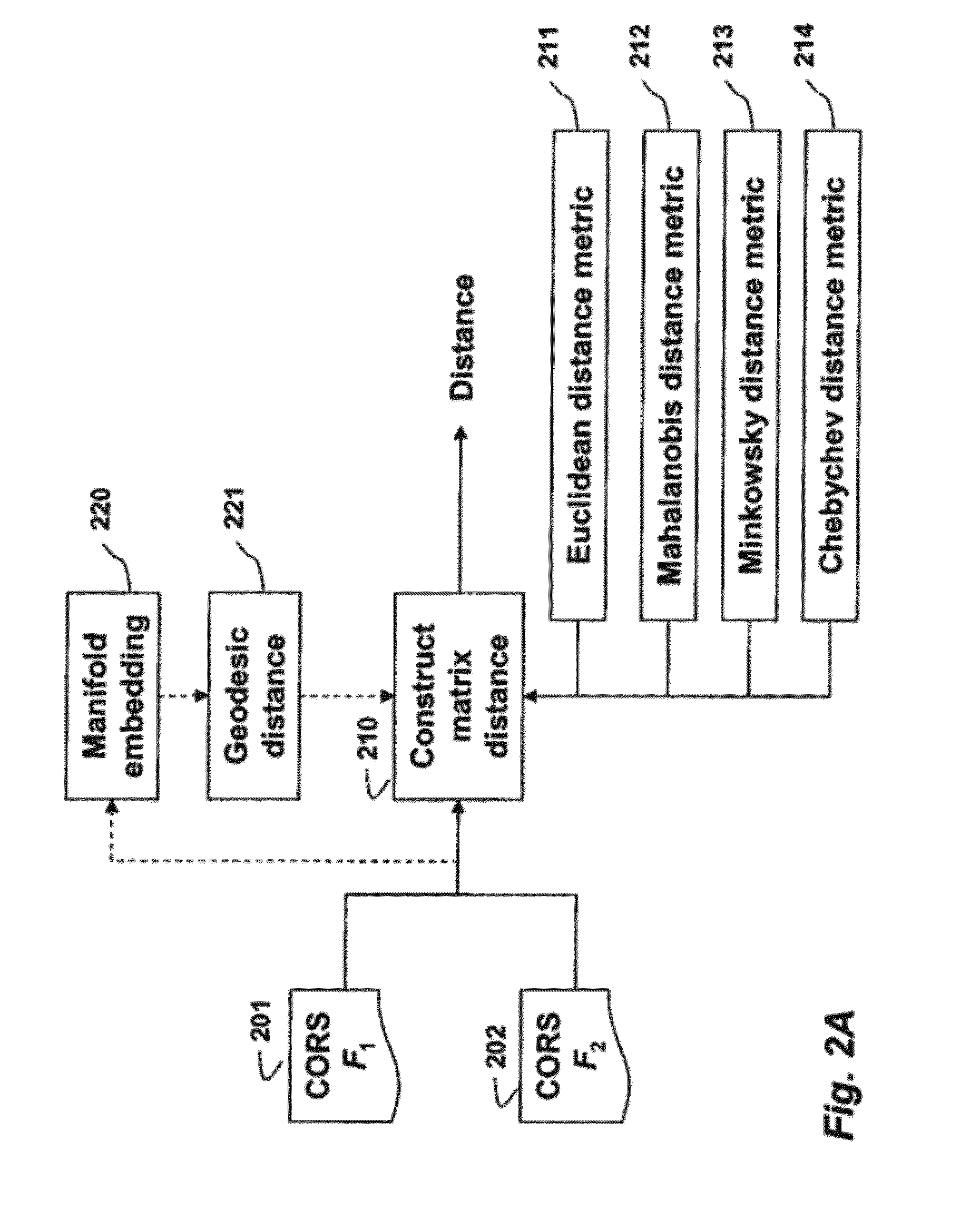Method for Representing Objects with Concentric Ring Signature Descriptors for Detecting 3D Objects in Range Images
- Summary
- Abstract
- Description
- Claims
- Application Information
AI Technical Summary
Benefits of technology
Problems solved by technology
Method used
Image
Examples
Embodiment Construction
[0044]The embodiments of our invention provide a method for representing a 3D object with a descriptor, and detecting similar objects in a query 2.5D range images using the descriptor. The 2.5 range images can be acquired by a scanner. The 3D object is modeled by a 3D point cloud. As defined herein, object detection generally includes object shape matching, object recognition, and object registration, and a point cloud is defined a set of vertices in a three-dimensional coordinate system (x, y, z) intended to be representative of an external surface of the object. More specifically, the point cloud is sparse, see U.S. patents and Publication U.S. Pat. No. 7,605,81 7,856,125, and 20080310757.
[0045]We describe a 3D descriptor, which represents local topologies within a set of folded concentric rings, by distances from local data points to a projection plane. We call this descriptor a Concentric Ring Signature (CORS). The CORS are stored in a database and associated with the correspond...
PUM
 Login to View More
Login to View More Abstract
Description
Claims
Application Information
 Login to View More
Login to View More - R&D
- Intellectual Property
- Life Sciences
- Materials
- Tech Scout
- Unparalleled Data Quality
- Higher Quality Content
- 60% Fewer Hallucinations
Browse by: Latest US Patents, China's latest patents, Technical Efficacy Thesaurus, Application Domain, Technology Topic, Popular Technical Reports.
© 2025 PatSnap. All rights reserved.Legal|Privacy policy|Modern Slavery Act Transparency Statement|Sitemap|About US| Contact US: help@patsnap.com



